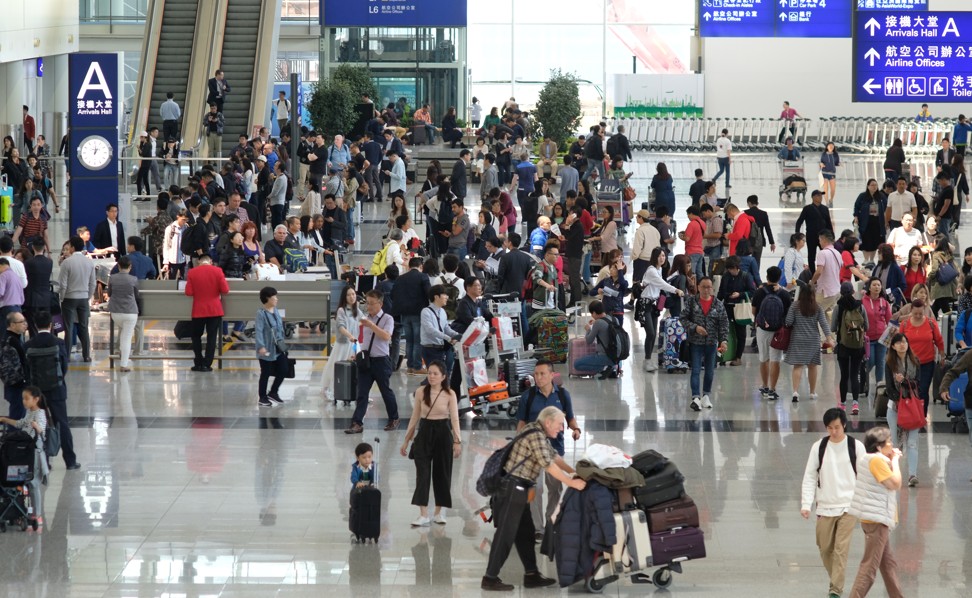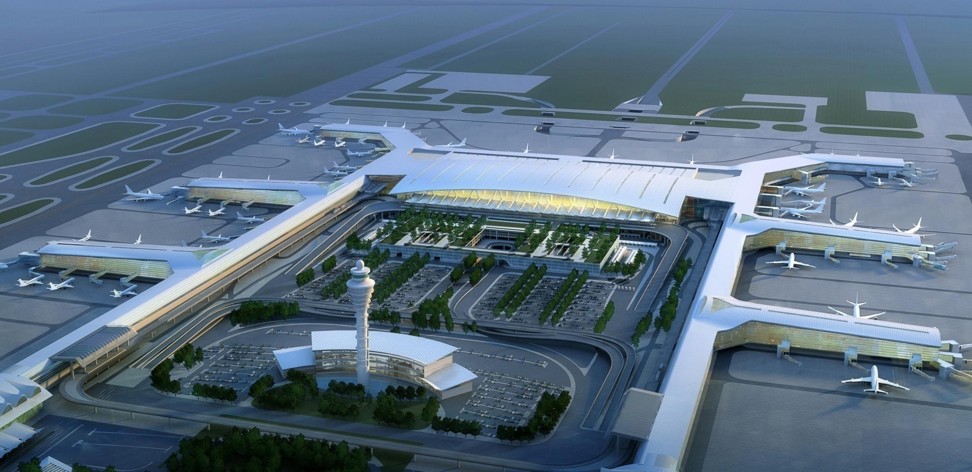
Guangzhou’s new airport terminal opens as passenger numbers soar
Subway line connecting travellers to the city centre also starts operating
Guangzhou’s new 17 billion yuan (US$2.7 billion) airport terminal opened on Thursday, designed to handle 100 million passengers a year from southern China’s “Greater Bay Area” by 2025.
A subway line connecting the city centre of the Guangdong capital with the new terminal at Baiyun International Airport will also start operating.
The bay area is China’s most developed region and the economic and business hub includes Hong Kong, Macau, Guangzhou, Shenzhen and Zhuhai.
It is home to 66 million people and has an economy as big as South Korea’s.

Chris Wietse, a businessman from Holland, was the first passenger to board the new terminal’s maiden flight. “I’m always impressed with China’s new infrastructure projects. This terminal is brand new and clean. The services are good also,” he said. “Guangzhou airport is more convenient and efficient for business trips in the mainland, compared to Hong Kong airport.”

Passenger numbers in the region are expected to reach 223 million a year by 2020, up from around 175 million last year, according to the China Civil Airports Association. It said the level of airport traffic would dwarf that of other bay areas such as San Francisco, New York and Tokyo.
The 880,000 sq m facility is expected to be handling 45 million passengers a year by 2020.
On its first day of operation, however, the new terminal will handle a reduced schedule of about 30 domestic and international flights.
The existing terminal – which has been in operation since 2004 and has capacity for 35 million passengers annually – handled more than 65.84 million last year, according to the airport operator. That figure trailed the 72.86 million passengers that went through Hong Kong’s airport in 2017.

Guangzhou’s growth in passenger volume last year was among that of the biggest six airports in the country, according to the operator.
It said it aimed to handle some 3.5 million tonnes of cargo and mail by 2025 as it seeks to become a world-class airport with over 220 international routes.
Passenger growth rates suggest it is only a matter of time before the airport, which ranked 13th globally last year, overtakes Hong Kong, which is in the eighth spot.
The gap in passenger volume is expected to narrow quickly, with a number of domestic and international routes to be introduced this year, said economist Peng Peng, vice-president of Guangdong-based South Non-governmental Think Tank.
But Guangzhou airport’s focus is still domestic air travel – 60 per cent of the 170 locations it connects to are on mainland China and it lacks international flights.
It has just six routes to Europe, five to North America and 48 in Asia. From Hong Kong, in comparison, there are 21 flight routes to Europe, 10 to North America and 112 across Asia.

Achim Czerny, an associate professor in aviation management at Polytechnic University, rejected the idea that Hong Kong would be marginalised as Guangzhou airport expands.
“Given the huge population of the Pearl River Delta region and the growth in the demand for air traffic it makes absolute sense to have two or three big airports in the Pearl River Delta region,” he said. “I believe that Hong Kong airport will remain an important international airport in the near future and that it will have no problem to fill the extra capacity after the opening of the third runway.
“Other airports emerge – this is natural. But I don’t think this is a problem for Hong Kong airport and its status as an international hub.”

In the city of Jiangmen, known as the hometown of nearly four million overseas Chinese, Feng Xueting runs an agency selling airline tickets. Feng said many travellers to Guangdong were now choosing to fly into Guangzhou rather than Hong Kong.
“Instead of flying to Hong Kong, more than 80 per cent of Chinese travelling from South American and African countries now fly into Guangzhou airport and then take a bus or high-speed train back to their hometowns in southern China,” Feng said.
Additional reporting by Danny Lee

